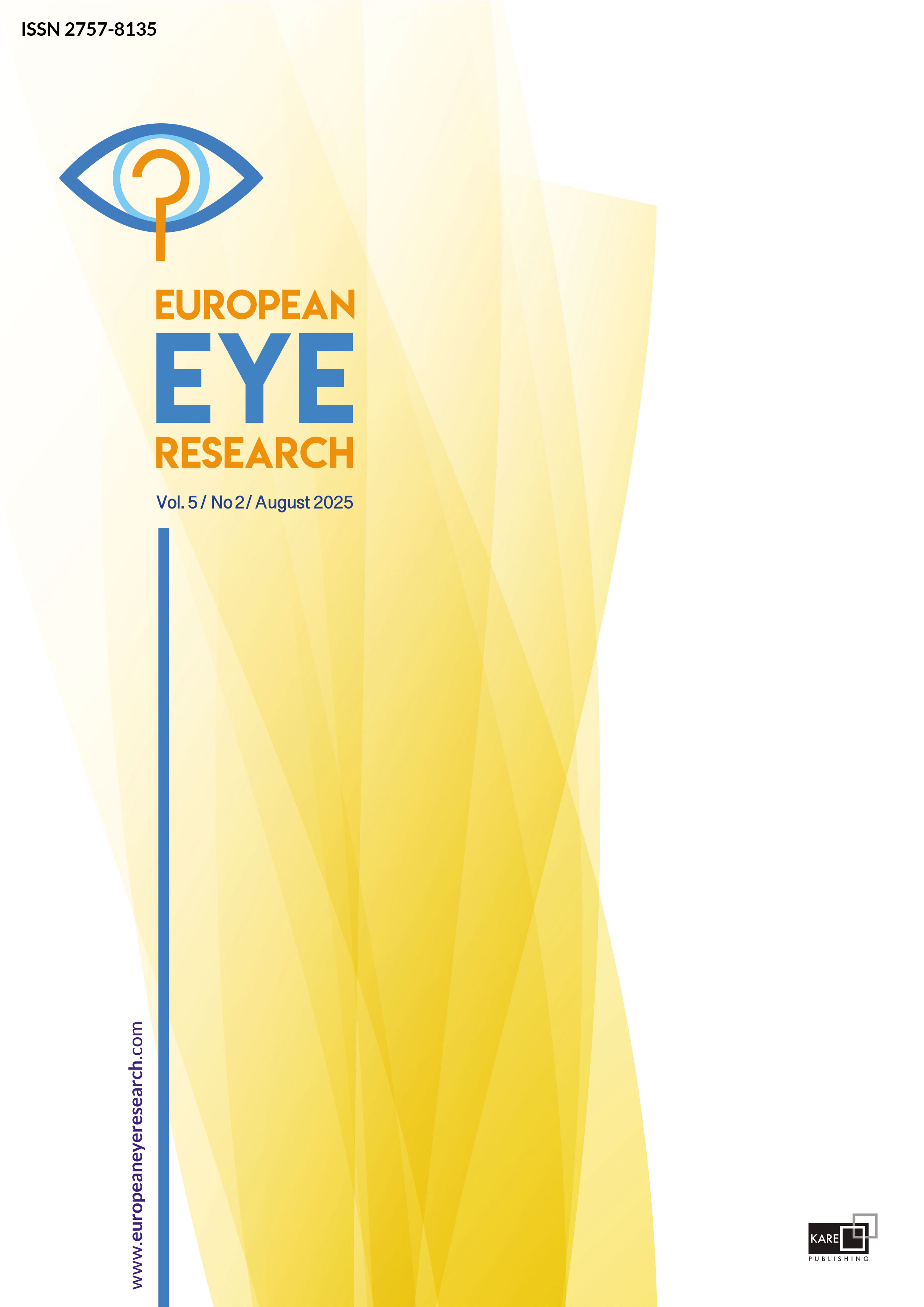

Effects of horizontal rectus recession surgery on refraction in the long term
Emine Kaya GunerDepartment of Ophthalmology, Izmir City Hospital, Izmir, TürkiyePURPOSE: Our aim was to investigate the long-term refractive effects of horizontal rectus recession surgery on the affected eye and to thoroughly evaluate detectable effects using astigmatic vector analysis.
METHODS: Data of patients who underwent horizontal rectus recession surgery were retrospectively evaluated. Age, gender, angle of deviation, surgical procedure, amount of muscle recession, preoperative and 6-month postoperative refraction values were recorded. Surgically induced astigmatism (SIA) was calculated. Patients were divided into two groups: Group 1 = medial rectus (MR) recession, Group 2 = lateral rectus recession.
RESULTS: Group 1 comprised 30 eyes of 20 patients, and Group 2 comprised 28 eyes of 17 patients. At the 6-month postoperative mark, spherical equivalents (SEs) showed clinically insignificant and statistically insignificant small hyperopic shifts in Group 1 and myopic shifts in Group 2. While no significant change was observed in cylindrical values in either group, the median SIA was 0.50 (range: 0.00/3.55) in Group 1 and the mean 0.44 ± 0.39 in Group 2. Generally, induced astigmatism followed a with-the-rule (WTR) pattern in both groups. In Group 1, the SIA value increased with decreasing age (rho = −0.435, p=0.016). Although there was no significant correlation between the amount of recession applied and SIA in either group, a moderate positive correlation was observed between the amount of deviation and SIA in Group 1 (rho = 0.646, p=0.000).
CONCLUSION: In our study, no significant change was observed in SE and cylindrical values. SIA usually resulted in WTR astigmatism. In the MR recession, SIA increased as age decreased. In addition, a significant relationship was observed between the amount of shifts and SIA in this group. We speculate that the effect of recession surgery performed at a younger age and on the MR is more enduring and pronounced.
Manuscript Language: English



